Is there any doubt that fresh herbs are the culinary stars of the kitchen?
The right combination of herbs and spices can instantly add panache to any dish, taking it from good to great, or so-so to sublime.
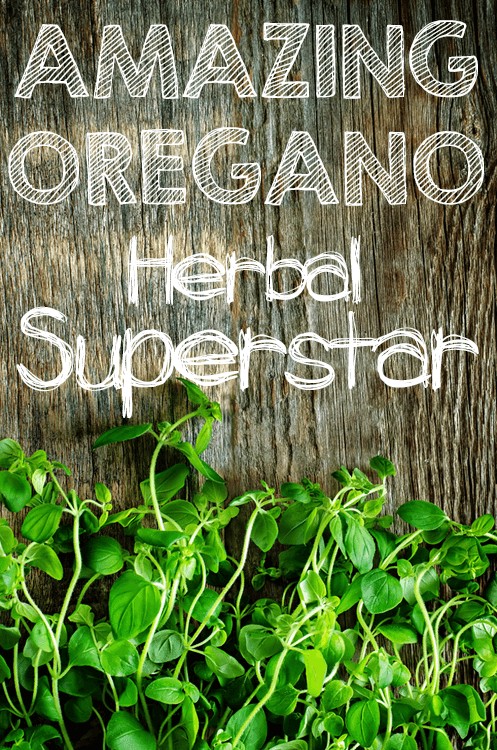
And one of the brightest of those stars is oregano. A seasoning staple in Italian dishes, it’s now also a standard herb in most kitchens and can be added to a broad range of dishes for its distinctive, bold dash of flavor and distinctive aroma.
It has a lovely affinity for the familiar Italian tomato-based dishes, but also combines well with lamb and numerous Greek dishes as well as Mexican cuisine, salads, dressings, vegetables, egg dishes, seafood, chili, grilled meats, marinades, savory breads and stuffing.
Exquisitely aromatic, oregano offers much more than culinary uses.
More Than Just a Cooking Herb
Oregano is also a headliner in health benefits with astronomical antioxidant properties. Its essential oil can be used topically for pain relief, it aids in relieving the symptoms of a number of health issues, and its volatile oils – thymol and carvacrol – have effective anti-bacterial properties.
When in bloom, its pungent fragrance is wonderful in nosegays and bouquets, and it’s truly a natural for aromatherapy. Dried, it also adds its signature scent to sachets or bowls of potpourri.
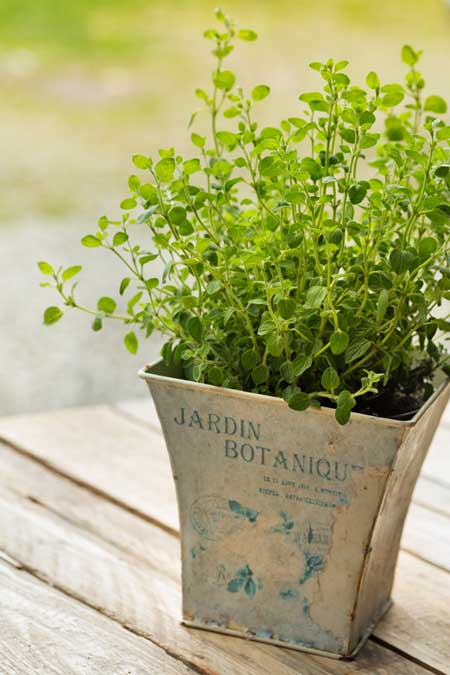
Not only are the delicate and fragrant purple/white/pink blossoms very attractive in the garden, they also provide a natural habitat for pollinators such as butterflies and bees.
And providing this offshoot benefit becomes more and more important as their natural habitat is encroached upon or destroyed by urban expansion.
Botany & Background
Origanum vulgare, or common oregano, is a member of the mint family Lamiaceae, and is often referred to as wild oregano or wild marjoram. There are numerous classified varieties within the genus Origanum, and as it cross-pollinates at will with similar species, many more naturalized hybrids are added to the family.
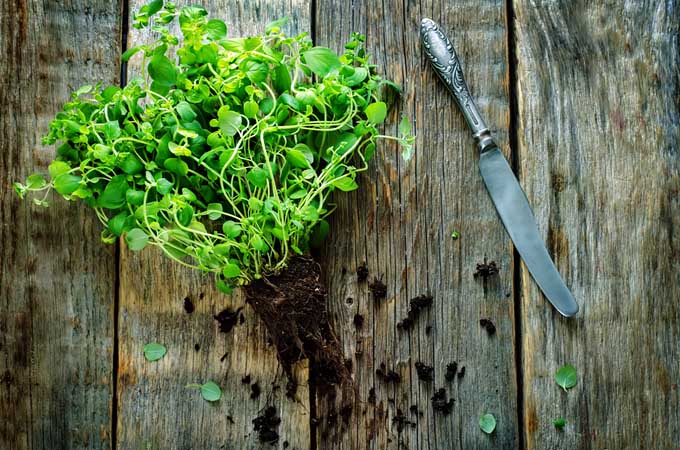
Both oregano and marjoram belong to the mint clan, and because of the large number of plants that look and taste similar, they’re often confused for each other, and with other subspecies.
To clarify a bit, marjoram has a more delicate, sweeter flavor than oregano, whose flavor is more robust and intense. It’s actually been said that it’s easier to think of oregano as a flavor, rather than as a particular plant.
Other species of Origanum also include the herbs sweet marjoram and hyssop.
Native to the temperate climates of the Mediterranean and Eurasia, oregano is known to have been cultivated in Egypt for over 3000 years. It was also used by the ancient Greeks in the classical era and has been cultivated in the British Isles since the 13th century.
The earliest record of oregano usage dates to 1600-1200 BC, and tablets with inscribed images of the plant dating to this period were found in the area that is known today as Syria. It’s believed that the herb first made its way to North America with the European colonists that came to settle the new world.
The origins of the word oregano are from the Greek words oreos and ganeos, which translate to mountain and joy or beauty. It was commonly referred to as “joy of the mountains” due to its prolific growth, and beauty as it grew in wild abundance on the Mediterranean mountainsides.
Throughout the ages, Origanums have been utilized for multiple uses aside from cooking – among them hygiene, fragrance and cleaning. The ancient Egyptians used it for medicinal purposes, and as a disinfectant and preservative.
The Romans would make sachets by combining it with rosemary and lavender to scent their linens and baths. And the natural fibers of their clothes were protected with packets of dried oregano, used to repel moths and other insects.
Folklore
Oregano has long been associated with love. For the Romans, Venus (the goddess of love) gave this herb its scent to remind us mortals of her sublime beauty. It’s been used in love potions and spells, and sprigs of its blossoms are still used in wedding bouquets and nosegays.
For both the Greeks and Romans, a crown of wild marjoram was worn by the bride and groom the day of a wedding ceremony.
Some folk traditions also link it with divination. According to one myth, if a woman lay sprigs of it in her bed before going to sleep, Aphrodite would appear to reveal the identity of her future spouse.
It’s also been hung in doorways and grown in kitchen herb gardens to ward off evil. It was believed to repel witches’ spells, and to thwart ne’er-do-wells like goblins, ghosts and the devil.
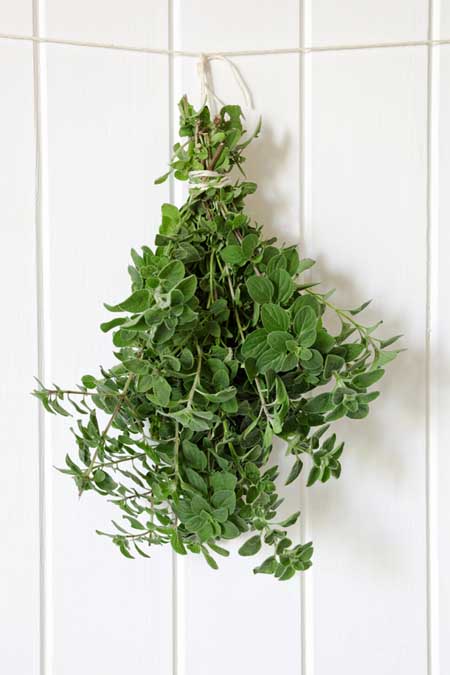
Syrian oregano is referred to in the Bible as hyssop, and it’s believed to be the plant used to paint doorposts with lamb’s blood during Passover in the book of Exodus, as well as for purification in both Leviticus and Psalms, and as a sacrificial offering in Numbers.
Culinary History
A popular culinary herb throughout Europe during the Middle Ages, oregano was used to flavor puddings and porridge as well as cakes. Records can trace its use to 14th century Spain, where it was added to stews and shellfish.
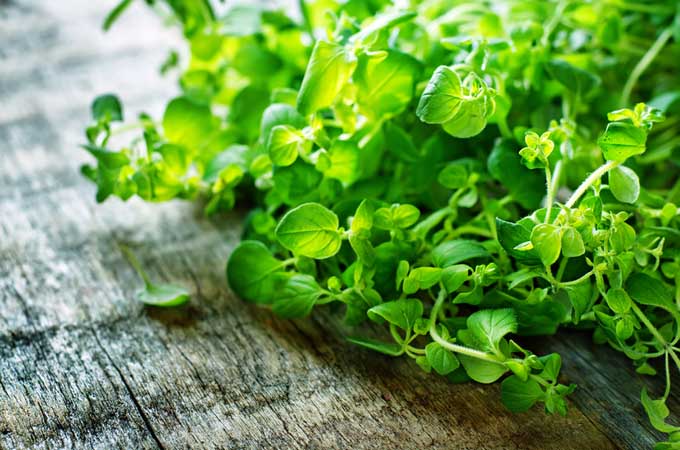
A common salad herb in the 16th century, it was also popular during the Renaissance in egg, rice, meat and fish dishes.
It has long been a popular tea, and before hops were used, it was an ingredient used in making ale, mead and beer.
And although it’s been grown in America since the colonial era, its popularity and widespread use boomed after GI’s returned home at the end of WWll, with a taste for Italian sauces and pizza.
Oregano’s rich flavor deepens and melds the flavors of soups and sauces (like our hearty meat sauce!)without overwhelming the dish, and it is a staple ingredient in a bouquet garni.
And because it retains its flavor well, oregano can be used either fresh or dried. If converting a recipe from fresh to dry, use twice as much fresh as the dried herb called for.
Looking for a way to keep all of your dried herbs and spices organized? Check out Foodal’s review of the best spice racks here.
Nutritional Benefits
Per gram, oregano is one of the world’s most antioxidant-dense foods, according to a report submitted to The Journal of Nutrition (1) in 2003.
Among the herbs, oregano ranks the highest for antioxidant density. This is 3-20 times higher than that found in other common kitchen herbs, with the most active phenol component being rosmarinic acid, a potent antioxidant.
Its antioxidant activities even outscore the heavyweights like blueberries and oranges, with just one tablespoon of fresh oregano equalling the antioxidant value of a medium apple.
And, its high concentration of phytonutrient compounds plays a significant role in helping to prevent cellular damage, as well as reducing the risk of common diseases such as cancer, heart disease, and hypertension.
It also has powerful antimicrobial qualities in the oils thymol and carvacrol, which are strong antiseptics used in products like mouthwash to inhibit the growth of oral bacteria.
It also a very good source of vitamin K and manganese, and has notable amounts of fiber, iron and calcium.
Oregano Oil
For therapeutic use, oil of oregano has long been touted by many herbalists and naturopaths for its many healing properties.
Along with its powerful antioxidant properties, essence of Origanum vulgare is now being studied for its health-promoting capacity in a number of areas. As research is in its early stages, conclusive results haven’t as yet been established, but the following areas are promising:
- For topical pain relief, such as with a toothache.
- A few drops in a diffuser or vaporizer may help to alleviate sinus and chest congestion, and reduce cough symptoms.
- Because of its anti-fungal and anti-viral properties, it’s thought to be effective in aiding gastrointestinal problems, as well as with fungal and mold infections.
- Diluted with a carrier oil, oregano oil can be applied to the skin for conditions like acne, cold sores and dandruff, and for the relief of sore, aching muscles and joints.
- Taken internally, it’s also thought to boost the immune system to help fight off colds and flus in the winter.
However, a few words of caution: Essential oils are steam distilled, with the end result being highly concentrated. As such, in its distilled form, oregano oil should always be diluted with a carrier oil such as olive, almond or grapeseed oil at a ratio of one part oregano oil to three parts carrier oil.
For some, it may irritate the skin and mucous membranes, so use with caution and avoid the area around your eyes. And, it also has an extremely intense taste – hot, pungent, peppery and not very pleasant… just so you know.
In the Garden
Oregano is well suited not only to kitchen herb gardens, but also as a fragrant ornamental that works well in rock gardens, as a border, and in naturalized grassland settings.

Origanum vulgare grows well in sandy, well-drained soil and requires full sun to thrive. When planting, “think Mediterranean.” That is, it will do best in hot, somewhat arid conditions – full afternoon sun in a well-drained spot with minimal watering and fertilizer will produce oregano with a strong, robust flavor and oil.
For lusher blossoms, plant some in a north-facing location. Although the flavor won’t be as intense as it is for those planted with a southern or western exposure, the flowers will be full and fragrant.
Another bonus is that the aromatic quality of this species means it tends not to suffer from common garden pests, and can be used in companion plantings for healthier crops.
Commonly used as a companion for tomatoes, grapes and other garden veggies, it’s particularly effective with the Brassica family. Plant oregano with cabbage, broccoli, cauliflower and kale to repel the cabbage butterfly, and near cucumbers to thwart the cucumber beetle.
Bouquet Garni & Nosegays
A bouquet garni is a collection of kitchen herbs bound into a bundle with kitchen string, sea grass or a stand of leek or chive greens, to be added to soups, stews and sauces for fresh, herbal seasoning.
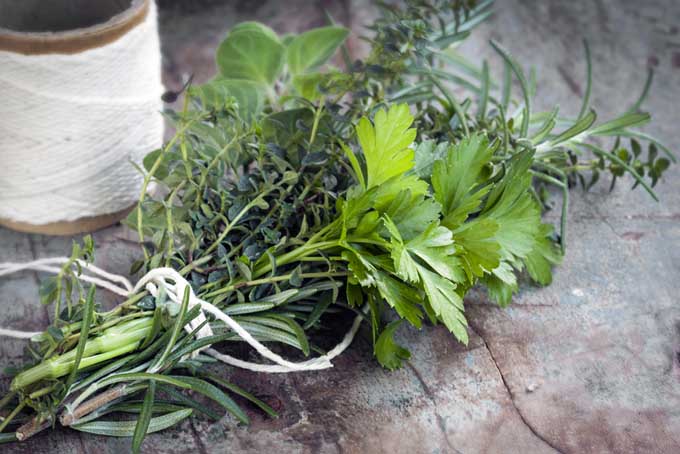
Although there’s no set recipe for a bouquet garni, a common combination includes sprigs of oregano with rosemary, sage, thyme and bay leaves. Keep some or all of these herbs growing near the kitchen to enjoy their fresh flavor in your favorite comfort dishes.
Or, add a bouquet garni to marinades for meat, poultry and fish to enjoy the outstanding antioxidant benefits as well as the delicious taste.
Use sprigs of rosemary along with the blossoms of oregano, lavender, sage and thyme for a delightfully fragrant nosegay. Take advantage of its calming aromatherapeutic properties any time you want to pause and relax, or just before sleep.
Place the nosegay on a folded serviette and roll the herbs gently to release their fragrance while taking several deep breaths. You’ll sleep like a baby.
Fantastically Fresh and Flavorful
And that wraps up our look at amazing oregano. From humble kitchen herb to antioxidant superfood, to pain relief (and protection from evil spirits), oregano seems to have it all covered.

If you’re not familiar with this delightful herb, give it a try, as its versatility and outstanding benefits are well worth a foray into new territory. And, if you just want to try it in something different from the kitchen, here’s a few recipes to enjoy the wonderful flavors, fragrances and benefits of “joy of the mountains.”
Make Your Own Flavor-Infused Oil
Oregano-flavored oil makes a delicious addition to dressings, marinades, and more. To make your own at home, you can find our simple DIY tutorial here.
Olive Oregano Bread
The flavor and aroma of this herb is amazing when baked into a fresh loaf or rolls.
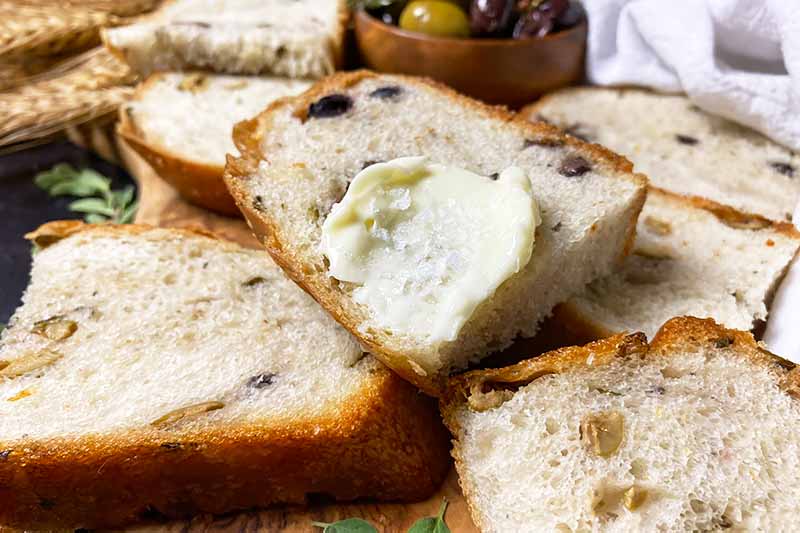
Breaded Eggplant & Mozzarella Slices
This quick and easy vegetarian dish has a zesty oregano and tomato sauce, and it’s great for mid-week meals when time is short. Serve as an entree with a salad, or as a side dish with pasta, chicken or fish.
- 4 tablespoons olive oil
- 1 can diced tomatoes 12 – 14 oz.
- 2 cloves garlic smashed and minced
- 2 tablespoons fresh oregano minced
- 1 large handful fresh basil roughly shredded and chopped
- sea salt
- fresh ground black pepper
- 1 ounce Parmesan or Asiago cheese grated
- 4 cups breadcrumbs
- 2 large eggplants stem and blossom end trimmed, and sliced lengthwise
- 6 ounces Mozzarella cheese sliced
- 1 cup all purpose flour
- 2 eggs lightly beaten
- canola oil for frying
- Heat a medium skillet over medium-high. Add 1 teaspoon oil, tomatoes, garlic and oregano and simmer for 3-4 minutes. Stir in the basil and season with salt and pepper. Reduce heat to low to keep warm.
- In a medium bowl mix the grated Parmesan or Asiago with the breadcrumbs.
- With both the eggplant and sliced Mozzarella, dip them individually first into the flour, then the beaten egg and finally roll in the breadcrumb mix.
- In a large, heavy skillet heat 1 teaspoon of oil and once hot add the eggplant and mozzarella in batches. Fry on each side for 2-3 minutes until crisp.
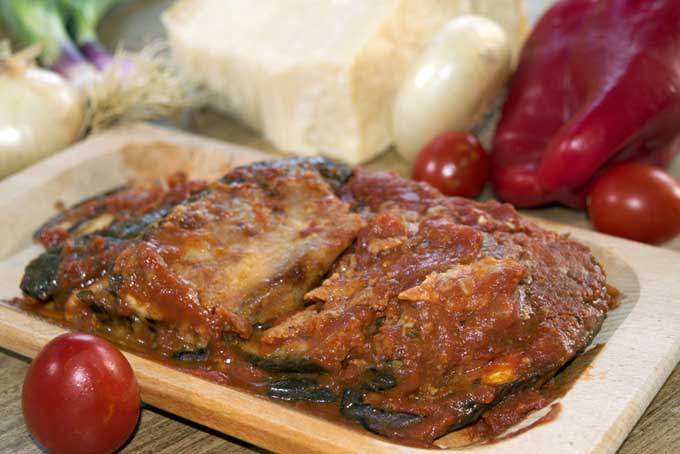
Notes:
(1) Human Nutrition and Metabolism, Several Culinary and Medicinal Herbs Are Important Sources of Dietary Antioxidants, Dragland et al, http://folk.uio.no/runeb/pdf%20filer/Dragland%20JN%202003.pdf
About Lorna Kring
Recently retired as a costume specialist in the TV and film industry, Lorna now enjoys blogging on contemporary lifestyle themes. A bit daft about the garden, she’s particularly obsessed with organic tomatoes and herbs, and delights in breaking bread with family and friends.

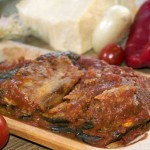
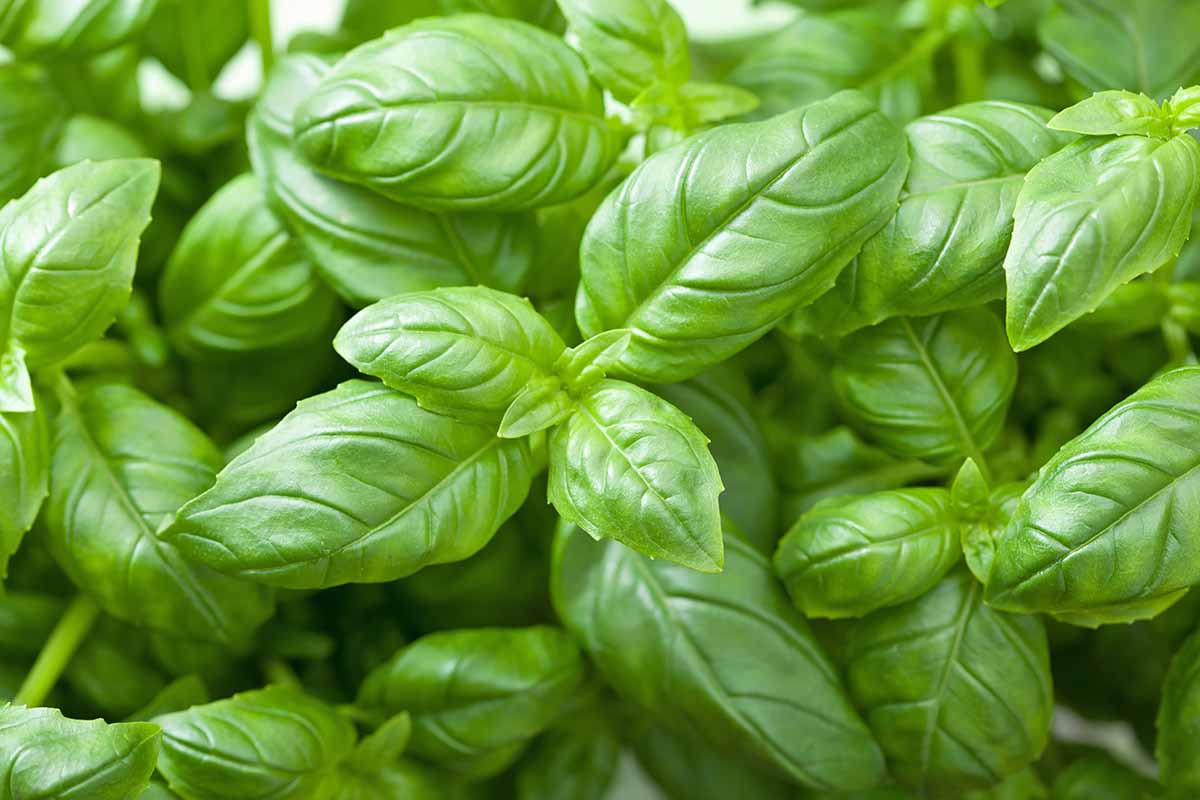

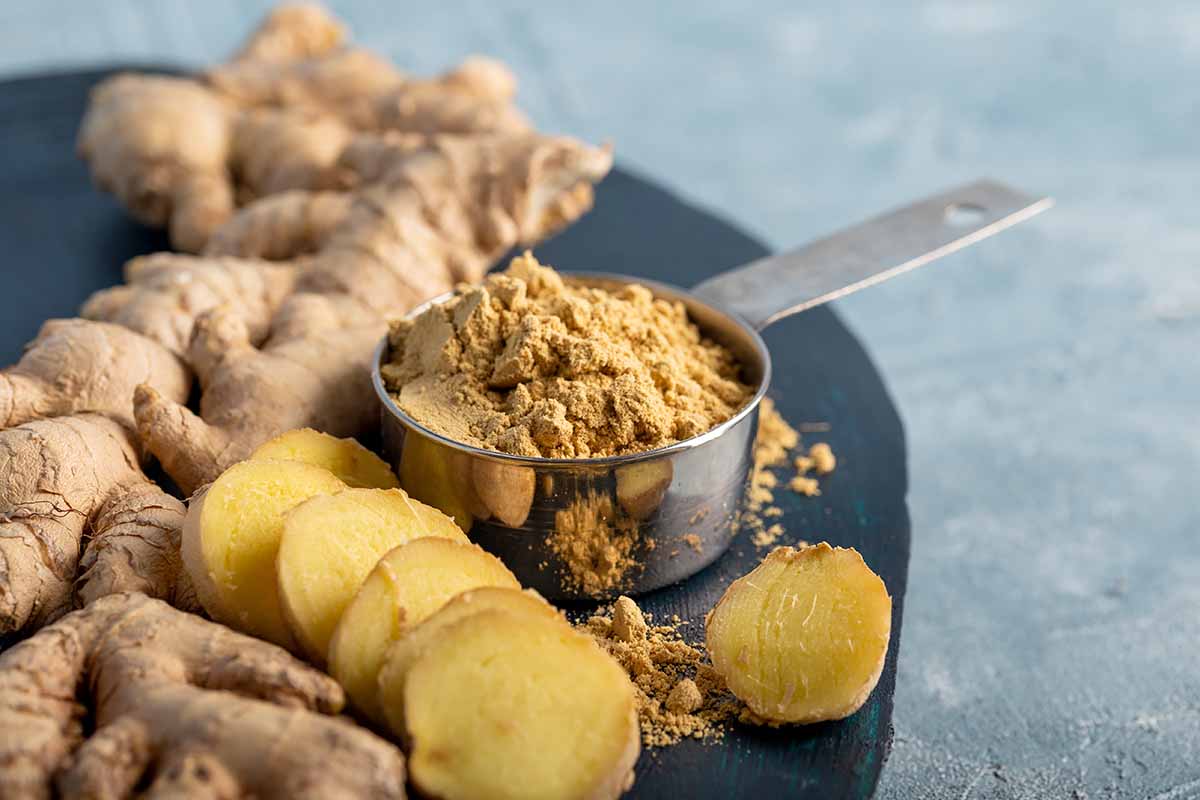
I have found many friends are surprised when I add Oregano to “everyday” dishes, rather than just Italian. They seem to think its made exclusively for marinara. I love to add it to beef in general. I think it really adds a flavor there that kicks things up a bit.
I have not been able to get around to growing fresh plants as of yet, but have been planning to so. I think there is something special about growing your own herbs and using them in my cooking.
It has a wonderfully versatile flavor that’s great for beef, and so much more.
And you’re so right misskrystal, growing your own herbs for cooking is a very special practice… very satisfying! Try a small 4″ pot from the grocers’ on the windowsill until you get around to planting some.
I love oregano. it tastes and smells great and it’s so easy to grow. It does as well on a windowsill as it does in the garden. I agree with misskrystal too, picking and eating fresh herbs that you’ve grown yourself is great!
Couldn’t agree more missbishi! Growing, picking and cooking with your own herbs is a nice way to look after you and yours.
I’ve grown oregano a couple of times but I find it doesn’t grow fast enough to accommodate my usage! I just buy a fresh bunch from the supermarket these days. It is really nice to have herbs in your kitchen though. It’s definitely an especially versatile herb to have as well.
The little pots of fresh herbs in the produce departments work well on a sunny windowsill… a good backup when growing season is over.
I am a big oregano fan. I use it in almost all the dishes I cook, from soups to meats and salad dressings.
I’m definitely going to try making the oil infusion. Sounds like something that could save me time in the kitchen, since I use oregano so much. I’m already planning to make some garlic & oregano bread. I could just try making the bread recipe from the article, but so far I haven’t been succesful when making bread, so it’s a bit daunting to me. I’m also not a huge fan of olives, but I can probably find a good substitute for it without much trouble.
Another great use for oregano, at least the dry kind you can get in stores, is to tear it in your hands a little bit and add it to breading mixes. I do it all the time when making breaded cutlets and, like the writers says, it really elevates the dish.
If you’re not a fan of olives JamieThePooh, you can substitute sundried tomatoes (drain them first) or roasted red bell peppers – they both work well with oregano. And thanks for the tip on breading mixes, it makes a great addition to pretty well all meats.
I use oregano in many dishes and pretty much always have it in dry leaf and powder form in my herb racks.
I didn’t, however, know it had so many health benefits and hadn’t though about it as good for companion planting. Given it tolerates sun and low watering, I will put some outside my door where I have some cherry tomatoes and basil growing – it is north facing but that is ideal in Australia for sun exposure!
Adding fresh herbs to some bread has got my attention, too, and that eggplant dish looks divine!
Your tomatoes and basil will love having an oregano buddy LSA, and the pollinators will appreciate it too. Enjoy your harvest!
Oregano is one of the only spices I am not a fan of. It’s used so much in Italian cooking. While this is my favorite cusine any dish thay over does it with this spice I have a hard time eating. I’ve tried so hard to like it but I just can’t take the taste or smell of it.
Too much and it can certainly be overpowering KM, and it’s not to everyone’s liking. Good thing there’s so many other tasty and healthy herbs to cook with!
I’ve always loved the taste of oregano, but had no idea that it’s so healthy 🙂 It’s incredibly delicious.
I like to put oregano on tomatoes on my sandwiches.
It’s awesome with fresh tomatoes Elfp, they were made to be together.
I love oregano and we are growing it in the garden, can’t wait for springtime when I can go out and pick my fresh oregano. A friend and I have been wondering about the difference between oregano and marjoram, thanks for the clarification. It is nice to know that it is also very healthy and has so many antioxidants. I also love the part about the Greek Gods, time for me to make a love potion :-p
That olive and oregano bread looks amazing, thanks for the idea!
It was probably the Greek gods that came up with the recipe for the o & o bread valedevento! Glad you enjoyed the post.
My favorite herb, you can throw it into almost any bland soup and add an interesting flavor. Of course bread and italian sauces is where it is best known. The best thing though is that it is so easy to grow, I have this in my garden for food use, but also just have a small plant in my kitchen to make it smell good all the time. Really great article which gave me a few new ideas for my favorite herb.
It truly is a wonderful flavor for adding interest Azrile, and the intense fragrance is second to none!